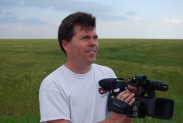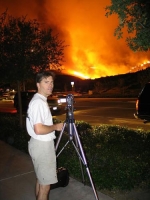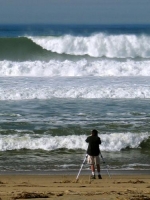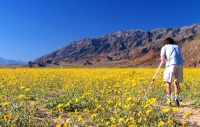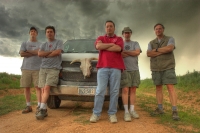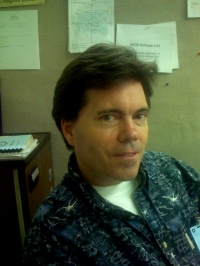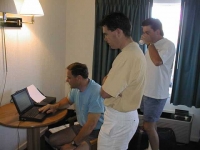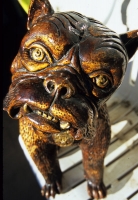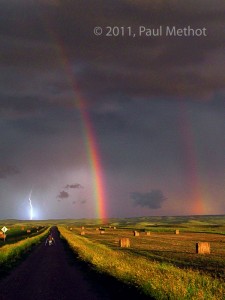WILLIAM TAYLOR REID
Auto-bio
Stormbruiser is my web site. It is a place where one can go to view amazing storm images and read storm chase accounts. It’s a place to learn about storm chasing, weather, and climate. And, Stormbruiser is an opportunity for me to share any and all of my passions and interests with the planet. Stormbruiser isn’t intended to be about me, but you will get to know me a bit if you spend some time here. I hope that your visits here are enjoyable, and, of course, in places, chock full of hilarity.
My e-mail address is
bill
at
stormbruiser
dotcom
Before my little write-up on my background, I would like to express my love of my family (the best ever) and my country (the greatest ever)! I am so fortunate to be able to pursue my passions in the home of the brave and the land of the free—God Bless America!
I was born near Los Angeles and grew up in the western San Fernando Valley in the City of Los Angeles, CA. I lived mostly in Woodland Hills, but also in Canoga Park and Reseda. Upon completion of high school at Crespi High in Encino, I enrolled at California State University, Northridge (CSUN).
As you probably know by now, I am a storm chaser. How in the world does a wee lad from California wind up chasing and documenting some of the most severe weather imaginable? Heck if I know—–it just worked out that way! In high school I was an astronomy buff.My friend had a beautiful 10-inch reflector telescope, and we spent countless nights peering into the heavens and looking for the faintest nebulae and galaxies in the star atlas. I went into college as an astronomy/physics major, but took a weather class in my first semester. By my second semester, I had switched my major to Climatology/Geography. The study of weather and climate, and especially geography, had a real appeal to me, and seemed to be a bit more “grounded” than astronomy.
I loved taking the weather and climatology courses at CSUN. I never really liked going to school, but I must admit now that I enjoyed learning how the atmosphere worked. CSUN had an excellent climatology program, headed by Dr. Arnold Court, my advisor. It was by chance, a total fluke, that I wound up at a school with a highly-respected climatology program. I enrolled at CSUN because it was the nearest four-year college, and I could afford the tuition. It was also about this time, my first year in college (1976), when I was given a rain gage as a Christmas gift. Up until this point in my life I had never thought about taking weather measurements or observations. As much as I can recall, I didn’t think about the weather too much growing up. I certainly enjoyed extreme weather. I loved heat waves and thunderstorms. We had plenty of heat waves in the valley, and very few thunderstorms.
By March of 1977 I had purchased a cheap-o dial max-min thermometer and had posted it on the north side of the house, where I could see it through the kitchen window. This is when I began recording the high and low temperatures and any precipitation every day for my little unofficial station in Woodland Hills. In my weather book I wrote down what the weather was like. I began to pay closer attention to weather forecasts on the TV and in the newspaper, I learned that there were phone numbers I could call for aviation forecasts and local airport observations, and I started listening to NOAA weather radio. In 1978 I put together a Heathkit weather station which included wind instruments, which I mounted on the roof. Why did weather fascinate me? Why did I feel compelled to measure and record all of this stuff? The weather where I lived was decidedly boring and monotonous almost all of the time, it seemed. Storms were few and usually weak. It was sunny and pleasant day after day. My developing passion must have been driven by a general inquisitiveness and fascination with the atmosphere. I needed to know why it was hotter or colder day to day, or hotter or colder or wetter or drier where I lived compared to surrounding places. Woodland Hills seemed like a special place climatologically, as it tended to be hotter in summer and colder in winter than other areas of Los Angeles. I looked forward to recording the weather each day.
By 1980 I had a fancy new Heathkit Digital weather station set up at home, and my Climatology advisor, Dr. Court, loaned me several standard weather instruments which I set up in the backyard! These included a standard-sized cotton region thermometer shelter, a Belfort hygro-thermograph and a Belfort recording weighing rain gage. These instruments provided continuous (and accurate and official) temperature and precipitation data. I phoned in my daily data into the Los Angeles Daily News in 1980, and to the National Weather Service beginning in 1983. Woodland Hills was on the local and national weather map, thanks to me and my school’s generosity.
At school I was immersed in the stacks of climate data in the library. I wrote down all of the daily high and low temperatures since 1949 from the weather station at Pierce College in the West Valley, and I researched the climate data for many other weather stations in southern California and the Southwest U.S. I also joined the local chapter of the American Meteorology Society, and regularly attended their monthly meetings. I earned my Bachelor’s Degree in 1981 and my Master’s Degree in Climatology in 1987. My thesis was on temperature patterns in the Eastern Mojave Desert, and I researched all of the old records from Death Valley and California’s eastern deserts that I could find. At the local AMS meetings I shared much of my findings.
After college I worked briefly as a hydrologic technician with the Corps of Engineers, and then was hired by Continental Weather Services, a private weather company in Encino. I did climate studies and some forecasting for Continental Weather, and learned to read the weather maps and forecast charts which arrived on the “Difax” machine printer. Hourly weather observations arrived constantly through the computer. It was the perfect place for a weather nut to work!
This was about the time that I really got in to storm chasing. Let’s back up a little. When I was in grade school, my family would make the drive to Omaha, Nebraska, for our summer vacation to visit aunts and uncles and cousins. On many nights in Omaha I was up late, staring through the window, watching a spectacular lightning display…or desperately hoping one would develop! When I received my driver’s license I found myself driving towards and into the thunderstorms near Omaha, or out in the desert areas north of Los Angeles. I liked to be in heavy rain, I was ecstatic if hail was falling, and I especially liked lightning and thunder and inky black skies. I can recall experiencing just a handful of decent thunderstorms growing up at home. Some of the Omaha storms scared me a little, but I couldn’t get enough of them. I was storm deprived in California, but I was definitely not obsessed with storms. I was more interested in climatology, and ice hockey, and music, through the 1980s.
I saw a small tornado near Sterling, Colorado, on a trip to Omaha back around August, 1988. This encounter was completely fortuitous and unexpected. An isolated thunderstorm developed along Interstate 76 and the tornado formed a few miles to the north as we drove by. Even though this storm was incredible and I was thrilled to have witnessed a tornado, this was not the event which got me into chasing. At the time I was not especially into storms and severe weather. Sure, I loved to experience them, but I figured that my encounters with them would just be in these types of situations —- on my occasional trips in the western U.S. and the Great Plains to visit relatives, and the rare thunderstorms near home. I thought that tornadoes were flukes, and were events which were impossible to predict. I didn’t really understand severe storms, I had never heard of a supercell or a rotating thunderstorm or a storm chaser. (Well, maybe that is not entirely true, as I read an article on storm chasers in “Weatherwise” magazine. I guess it did not impress me much.) I didn’t grow up hoping someday to see a tornado. I didn’t think about them, actually. I certainly never thought that I would see a tornado in my lifetime, even as I turned 30. I just didn’t think about them —- tornadoes didn’t matter to me!
In late 1990 or early 1991, an acquaintance of mine shared some of his tornado and stormchaser videos with me. I knew Charlie Bustamante from college and the AMS meetings. He was really into thunderstorms and photography, moreso than I was. And the storms on those tapes blew me away! I had to get out to the Plains to see this stuff firsthand! In late April 1991 I was glued to CNN and The Weather Channel during the Great Plains tornado outbreak which featured the Andover and Red Rock events. That was it —- I’m going to go to the Plains to see some REAL storms! In late May, 1991, I made my first stormchase trek to the Plains from California. I basically had no clue at all as to how to forecast or approach a storm properly. But, I saw weak tornadoes on each of the first two days out there—in northeast Colorado and southwestern Nebraska! Beginners luck, for sure, and I was just thrilled to be amongst the dark storm clouds and the lightning and thunder!
During the 1990s I typically made two or three separate trips to the Plains with a friend or two to chase. By 1995 I was spending three to four weeks out there to chase. In July 1993, Charlie Bustamante and I decided to drive to eastern Colorado to see some severe weather, and we came back with some unbelievable tornado video and images! The next major event for me was in May 1998, when I witnessed the major tornado which devastated Spencer, SD. I was interviewed live on national TV in the town by ABC and CBS two mornings later. Through these chase successes, my chase videos, and by writing chase accounts on-line and for Stormtrack Magazine, I was making a name for myself in the chaser community. The recognition was nice, but I was much more interested in being able to chase a lot, see great storms, and shoot quality video and images.
In 2000 I was approached by Dave Gold of Silver Lining Tours, a private chase tour company. Dave asked if I was interested in being one of his guides and drivers for his company, as he was impressed with my chasing record. I was thrilled, as I would basically get paid to chase! I had a blast with Silver Lining on two tours in spring 2000, and I learned a LOT from Dave during those 20 days in terms of forecasting, chase strategy, and storm structure. During the 1990s I didn’t really feel that comfortable with my forecasting and chase abilities until about 1997 or 1998. Back then I relied heavily on forecast discussions from the National Weather Service and the current surface data. By 2000, the forecast maps were easily available on the Internet, and Dave helped me to interpret the maps, and said that WE were better forecasters of severe weather than the NWS folks writing the discussions. Well, Dave was at least!
On my drive back to California following my June chase tour in 2000, my friend Martin Lisius asked me I would be the tour director if he founded his own storm chase tour company. Wow—that was quite a surprise and quite a compliment! Martin had family obligations which prevented him from being a tour director, but I did not. I said “Sure!”, and I have been the primary tour director for Tempest Tours since we began in 2001. So, now I spend most of May and June leading the tour group around on the Plains, and I am able to do what I love and get paid for it —- not a bad deal! For the remaining ten months I work part-time at the grocery store (32 years and counting!) and at both Van Nuys AP and Los Angeles Int’l AP as the weather observer.
In late 2007 I finally got my act together and started to develop a web site of my own. I named it “Stormbruiser” for a couple of reasons. One—the name is somewhat unique, somewhat strange, and somewhat goofy—and this reflects my personality to some degree. Two—a “bruise” often takes on the look of an angry sky: dark and black and green and ugly, so that kind of worked. Finally, “Bruiser” is the name of the little ceramic bulldog “statue” that you will come across on occasion on this site. This same bulldog statue is found on album covers of one of my favorite musical artists: Wall of Voodoo. This rock group named this mascot bulldog “Bruiser”, and he would be present at the Wall of Voodoo shows that I attended.
Stormbruiser will never be complete. I just have far too much piled up through the years that I would like to share. But, hopefully I can make it look like it is bursting at the seams with no room left some day. Bruiser can take a break when that day comes.
photo credits: Charles Bustamante
left to right: near Cerro Gordo, California, in the Inyo Mountains above Owens Lake, around 1997; near the Simi Fire in Moorpark in October 2003; near Pismo Beach, CA, around 2005; and in southern Death Valley in February, 2005.
photo credit: Marcia Perez
from left to right: Bob Conzemius, William Reid, Keith Brown, Kinney (The Gardener) Adams, and Brian Morganti, on June 1, 2007 near Field, New Mexico
(cell phone) photo credit: Curt Kaplan
July 2007
Brian, Keith and myself an Abilene motel in May 1999 (photo courtesy of Brian Morganti)

Brian and myself in western New Mexico in May, 2007 (photo courtesy of Brian Morganti)
BRUISER SAYS “HELLO”
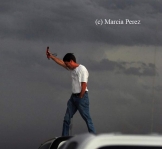
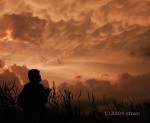
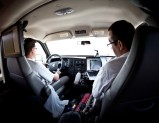 three photos above courtesy of Kirstie Johnson, John Wright, and Marcia Perez
three photos above courtesy of Kirstie Johnson, John Wright, and Marcia Perez
Below, courtesy of TT guest Paul Methot (guess who is standing down the road)

